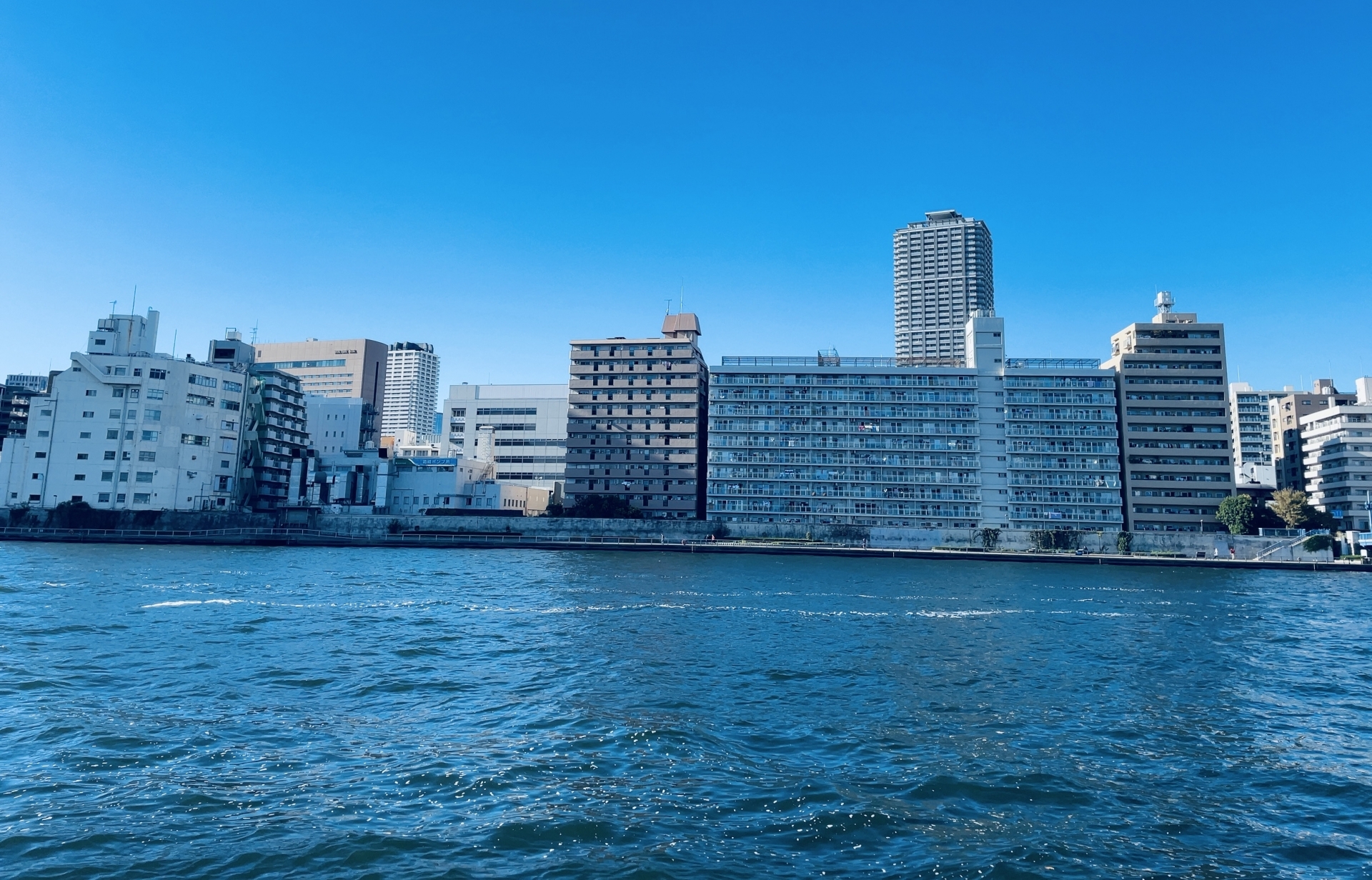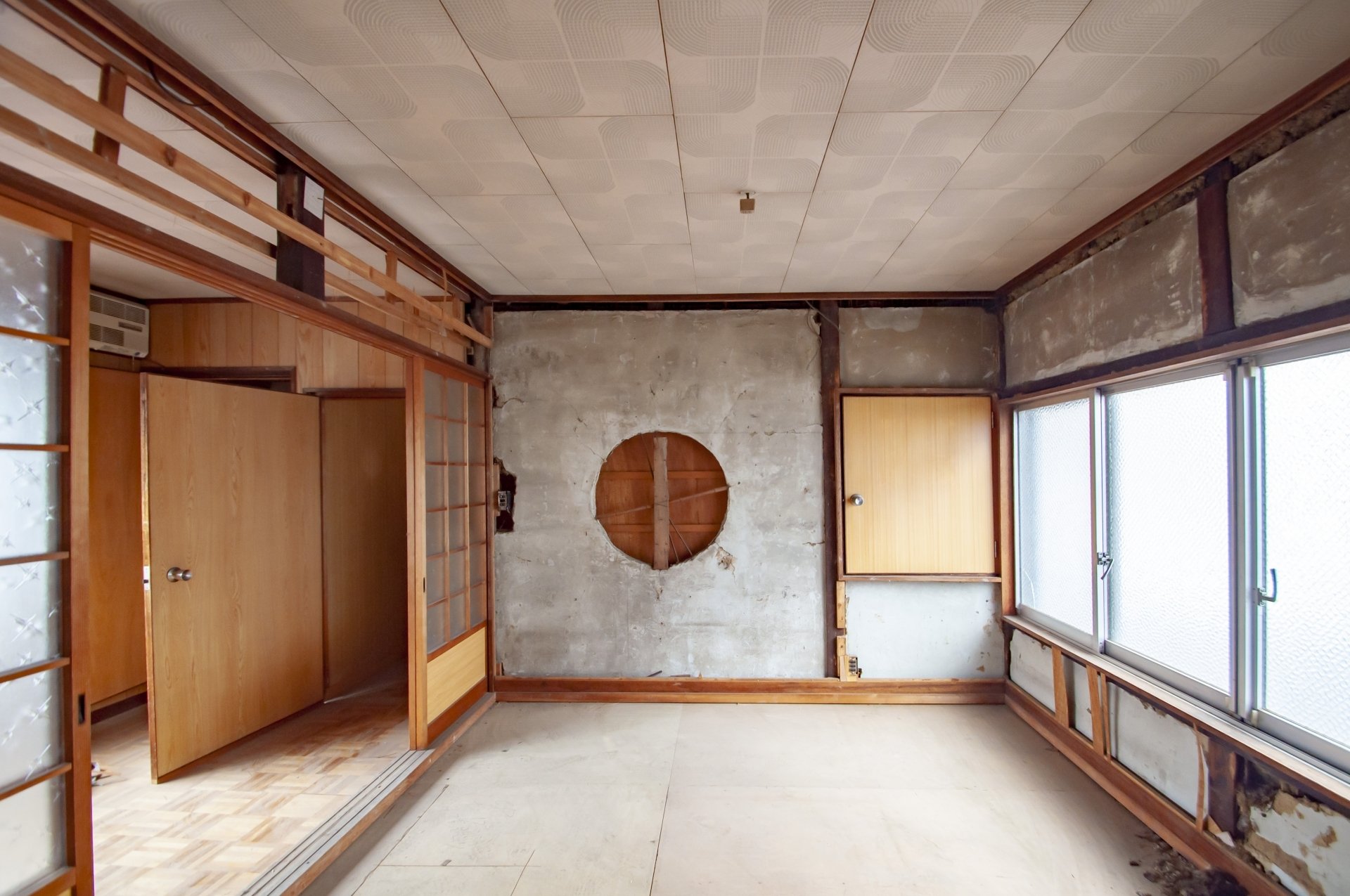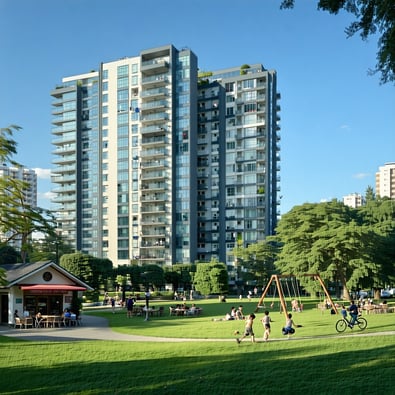Do you have a correct understanding of the role and importance of the "inspection certificate," an important document in real estate transactions?
The inspection certificate is an important document that proves that a building complies with laws and regulations, but in many cases, older buildings have not been obtained, which can be a problem when selling real estate or obtaining a mortgage.
In particular, buildings constructed before 1998 have a low rate of completion inspections, and there are many properties for which no inspection certificate has been issued.
In this article, INA & Associates, Inc. explains the basics of the inspection certificate, the risks involved in not having one, and how to deal with specific issues in an easy-to-understand manner for the general public.
If you are considering buying or selling real estate, inheritance, or remodeling, please read to the end.
What is an inspection certificate? Understanding Basic Knowledge
Definition and Role of an Inspection Certificate
An inspection certificate is a certificate issued for a building that has passed a completion inspection based on the Building Standard Law. This document plays an important role in publicly certifying that the building was legally constructed in accordance with the design specifications at the time of application for building permit.
The official name of the inspection certificate is the "building completion inspection certificate," and it is issued when the building is confirmed to be in compliance with the Building Standard Law and its related laws and regulations during the completion inspection conducted by the chief building inspector or designated inspection agency.
This certificate is one of the most important documents that indicate the safety and legality of a building, and is used as a standard for judging the reliability of a building in real estate transactions and in loan examinations at financial institutions.
Difference from the Building Permit Certificate
The Building Permit Certificate is a document that is often confused with the Inspection Certificate. It is important to clearly understand the difference between the two.
| Item | Building Permit Certificate | Inspection Certificate |
|---|---|---|
| Issuance Period | Before construction starts | After completion of construction |
| Contents of Certificate | Compliance of design documents with laws and regulations | Compliance of the actual building with laws and regulations |
| Subject to inspection | Drawings and documents | On-site building |
| Legal validity | Permission to start construction | Permission to start using the building |
The building permit is a permission required before starting construction, while the inspection certificate is positioned as a certificate required to start using the building after the construction is completed.
Flow of Issuance of Inspection Certificate
The following step-by-step procedures are required before an inspection certificate is issued.
Application for Building Permit
Before starting construction, the owner applies for a building permit to the District surveyor or designated inspection agency. At this stage, the design documents are examined for conformity with the Building Standard Law and other relevant laws.
Issuance of Building Permit
If the application passes the examination, a building permit is issued and construction can begin.
3. Construction Work
Construction work is carried out based on the design documents for which the building permit has been issued.
Application for Completion Inspection
After construction is completed, the owner must apply for a completion inspection within 4 days of the completion date. This deadline is set by the Building Standard Law, and any delay may result in a violation of the law.
5. Completion Inspection
The building inspector or an inspector from a designated verification inspection agency visits the site and inspects in detail whether the actual building has been constructed in accordance with the design specifications at the time of application for building verification, and whether it complies with the Building Standard Law, etc.
6. Issuance of Inspection Certificate
Upon successful completion of the inspection, an inspection certificate is issued. This certificate officially recognizes that the building is ready for use.
Contents of the Certificate of Inspection
The inspection certificate contains the following important information
- Name of the owner
- Location of the building
- Outline of the building (structure, size, use, etc.)
- Date of completion inspection
- Date of issuance of inspection certificate
- Name of inspection agency (chief building inspector or designated inspection agency)
- Certificate number
This information is an important record of the building's history and is the basic data that will be referred to in future real estate transactions and various procedures.
Risks and Problems without an Inspection Certificate
Serious Impact on Real Estate Sales
The sale of a property without an inspection certificate entails significant risks for the seller. The most serious problem is the inability to prove the legality of the building to the buyer.
Reduced willingness of the buyer to purchase the property
Buildings without an inspection certificate tend to be perceived by buyers as "possibly illegally constructed" properties. Even if the building was actually constructed legally, buyers are often hesitant to purchase it because there is no official document to prove it.
Significant drop in sale price
In the market, properties without inspection certificates are treated as "risk properties" and are generally forced to be sold at a price 10% to 20% lower than the market price. Especially for high-value properties, this price difference can range from several million yen to tens of millions of yen.
Lengthening of the sale period
Properties without inspection certificates tend to take longer to sell than normal properties because the number of potential buyers is limited. While the sale period for a typical property is three to six months, it is not uncommon for a property without a certificate of inspection to take more than one year to sell.
Significant Impact on Mortgage Loans
For financial institutions, the inspection certificate is an important indicator to determine the legality and safety of the property to be financed. Without an inspection certificate, the following problems can occur
Stricter loan screening
Many financial institutions are tightening their lending criteria for properties without an inspection certificate. Additional documentation and detailed investigations are required, and the examination period tends to be longer than usual.
Worsening of financing conditions
Loans for properties without inspection certificates may require additional conditions such as higher interest rates, reduced loan amounts, or additional guarantors. This increases the buyer's financing costs and may result in an obstacle to the sale.
Denial of the loan itself.
Some financial institutions have adopted a policy of refusing to finance properties without an inspection certificate as a general rule. This is especially the case with major city banks, which often have such strict standards.
| Financial Institution's Response | With Inspection Certificate | Without Inspection Certificate |
|---|---|---|
| Examination period | 2-3 weeks | 4-8 weeks |
| Interest Rate Terms | Standard interest rate | Standard interest rate + 0.1-0.5 |
| Loan Amount | 80-90% of property price | 60-70% of the property price |
| Additional Documents | Standard documents only | Conformity survey report, etc. |
Restrictions on Extension and Remodeling
Buildings without an inspection certificate are subject to major restrictions on future expansion and remodeling work.
Difficulties in applying for building permits
When building extensions or large-scale remodeling, an application for building permit is required, but if the legality of the existing building cannot be proven, it will be difficult to obtain permission for new construction.
Restrictions on Construction Work
In buildings without an inspection certificate, there may be restrictions on construction work related to the structure or work involving a change of use. This will result in the loss of opportunities to increase the value or improve the function of the building.
Change of Use Not Allowed
When changing the use of a building (e.g., from residential to retail), proof of legality of the existing building is required, but without an inspection certificate, such a change of use is virtually impossible.
Other important risks
Decrease in building asset value
Buildings without an inspection certificate are treated as a depreciation factor in real estate appraisals and property valuations. This may have an adverse effect on inheritance tax assessments and property tax assessments.
Problems in obtaining insurance
When purchasing fire or earthquake insurance, you may be asked to confirm the legality of the building. Buildings without an inspection certificate may be subject to premium increases and restrictions on coverage.
Problems at the time of inheritance
When inheritance occurs, a building without an inspection certificate may cause problems among heirs. In particular, the existence of an inspection certificate may become a major point of contention when opinions differ on the valuation of the building or the sale policy.
Given these risks, it is important to consider appropriate measures at an early stage if you own a building without an inspection certificate.
Effective measures to deal with the absence of an inspection certificate
Use of Building Code Compliance Surveys
The most effective way to deal with a building without an inspection certificate is to conduct a Building Standard Law Conformity Survey. This is a public survey system based on guidelines established by the Ministry of Land, Infrastructure, Transport and Tourism (MLIT).
Overview of the Guidelines of the Ministry of Land, Infrastructure, Transport and Tourism
Based on the "Guidelines for Building Standard Law Compliance Status Investigations Utilizing Designated Verification and Inspection Bodies for Buildings without Inspection Certificates" established by the Ministry of Land, Infrastructure, Transport and Tourism in July 2014, designated verification and inspection bodies investigate the legal compliance of buildings.
Organizations Conducting Surveys
Only designated verification and inspection agencies under the Building Standard Law can conduct this survey. There are approximately 150 designated verification and inspection agencies nationwide, each staffed with architects and inspectors with specialized knowledge and experience.
Details of the Survey
The Building Standard Law compliance status survey includes detailed verification of the following items.
1. Graphical survey
- Verification of design documents at the time of construction
- Identification of applicable laws and regulations such as the Building Standard Law
- Graphical verification of legal compliance
On-site survey
- Confirmation of actual building conditions
- Verification of consistency with the design documents
- Verification of structural and facility safety
3. Report Preparation
- Detailed record of survey results
- Determination of legal compliance
- Indication of items requiring improvement
Effectiveness of the survey report
The "Building Standard Law Conformity Inspection Report" issued as a result of the investigation is not as effective as an inspection certificate, but can be used as an important certification document to show the legality of the building.
| Item | Inspection Certificate | Conformity Inspection Report |
|---|---|---|
| Legal effect | Public Certificate | Private Investigation Report |
| Handling by Financial Institutions | Standard collateral evaluation | Evaluation by individual examination |
| Handling at the Time of Extension | Proof of existing legality | Used as reference material |
| Cost | Obtained at the time of construction | 200,000 yen to 500,000 yen |
| Survey period | -2 weeks to 1 month | 2 weeks to 1 month |
Obtaining a certificate of ledger entries
As an alternative document to the inspection certificate, obtaining a certificate of ledger entries is another effective way to deal with the situation.
Confirmation of the building plan summary
The building plan summary submitted at the time of application for building confirmation is kept by the specified administrative agency (e.g., building guidance division of the municipality) and is available to the public. With this document, the contents of the application for building confirmation can be confirmed.
Flow of acquisition procedure
- Application to the specified administrative agency with jurisdiction over the location of the building
- Browse and obtain a copy of the building plan summary
- Apply for a certificate of items listed in the ledger
- Delivery of the certificate (usually takes about one week)
How to use
The Certificate of Items Registered in the ledger can be used as a reference material for financial institutions and real estate transactions as a document that proves that the building permit application has been properly filed. However, since it does not directly certify the implementation of completion inspections or the legality of the building, it has limited validity.
Consultation and Cooperation with Specialists
Cooperation with several specialists is important to solve the problem of a building without an inspection certificate.
On-site survey by an architect
A detailed on-site survey by a first- or second-class architect can provide an understanding of the current status of the building and a preliminary determination of legal compliance. The results of this survey will serve as important basic data for determining the course of action to be taken afterwards.
Consultation with a real estate company
If you are considering selling real estate, it is effective to consult with a real estate company that has extensive experience in handling properties without inspection certificates. You can receive proposals for appropriate sales strategies based on market trends and the needs of buyers.
Obtaining Legal Advice
If complex legal issues are involved, you should consider consulting with an attorney who is familiar with construction law. Especially when neighborhood problems or administrative guidance are involved, professional legal advice is necessary.
Comparison of Coping Methods and Selection Guidelines
It is important to compare the characteristics of each method and make the best choice according to the situation.
| Coping Method | Cost | Duration | Effectiveness | Applicable Situation |
|---|---|---|---|---|
| Building Standard Law Compliance Status Investigation | 200,000-500,000 yen | 2 weeks - 1 month | High | Sale, financing, planned expansion |
| Certificate of Items Described in Ledger | 1 week | 1 week | Limited | Simple proof required |
| Survey by architect | 100,000-300,000 yen | 1-2 weeks | Moderate | Aimed at understanding the current situation |
| Combined approach | 300,000-800,000 yen | 1-2 months | Highest | Comprehensive solution is needed |
Selection Guideline
- Real estate to be sold: Priority is given to building code compliance status investigation
- Mortgage application: Conduct survey as required by financial institutions
- Plans for expansion or remodeling: Building Standard Law Conformity Survey is required
- Current status only: In some cases, a certificate of items listed in the ledger may be sufficient.
By properly utilizing these measures, it is possible to effectively solve the problem of buildings without inspection certificates.
Conclusion
Organization of Important Points
The inspection certificate is an extremely important document that certifies the legality of a building, and its presence or absence has a significant impact on real estate transactions and property values.
Importance of the Inspection Certificate
An inspection certificate is not just a document, but a highly reliable document that publicly certifies that a building complies with the Building Standard Law and other laws and regulations. This certificate guarantees the safety and legality of the building and greatly increases the credibility of a real estate transaction.
Accurate Recognition of Risk
A building without an inspection certificate is not necessarily illegal, but it does carry various risks due to the inability to prove legality. It is important to accurately understand these risks, such as price declines at the time of real estate sale, stricter mortgage screening, and restrictions on extensions and renovations.
Need for Early Action
Leaving a property without an inspection certificate can cause more problems in the future. As the demand for legality in the real estate market grows stricter each year, early action is the key to resolving the problem.
Recommended Next Actions
For those who own a building without an inspection certificate, we recommend the following steps to be taken
1. Conduct a status check
First, organize documents from the time of construction and check for the existence of a building permit and design documents. These documents will serve as important basic data to determine how to deal with the situation afterwards.
2. Consult with specialists
It is important to consult with an architect or real estate expert to obtain professional advice on the current status of the building and the best course of action.
3. Selection of the appropriate action
Select and systematically implement the best course of action for your situation, such as conducting a Building Standard Law Conformity Survey or obtaining a Certificate of Items Registered in the ledger.
4. Continuous follow-up
Even after implementing the coping methods, it is important to pay attention to changes in relevant laws and regulations and changes in market trends, and consider additional measures as necessary.
The issue of inspection certificates is a complex and specialized area, but one that can be resolved with proper handling. If you have any concerns or questions, please do not hesitate to contact our experts.
Frequently Asked Questions
Q1:Can the inspection certificate be reissued?
A1: Re-issue of an inspection certificate is not permitted under the Building Standard Law.
The Certificate of Inspection is issued only once upon passing the completion inspection, and cannot be reissued even if it is lost or damaged. This is because the completion inspection is a one-time inspection upon completion of construction, and the condition of the building may change over time.
The following methods are available to deal with the loss of an inspection certificate:
- Conduct a Building Standard Law compliance status survey
- Obtaining a certificate of entries in the ledger
- Obtaining a copy of the building plan summary
These alternative documents can prove the legality of the building to some extent.
Q2:Can I get a mortgage without an inspection certificate?
A2: It is possible to obtain a mortgage loan without an inspection certificate, but conditions may be more stringent.
Many financial institutions take the following actions for properties without an inspection certificate
- Request for additional documentation: Submission of a Building Standard Law compliance status investigation report, etc.
- Change loan conditions: Increase the interest rate or reduce the loan amount
- Extension of the examination period: Extension of the examination period due to a more detailed examination than usual.
However, the response varies from financial institution to financial institution, and some institutions may not provide financing for properties without an inspection certificate. If you are considering a mortgage loan, we recommend that you consult with several financial institutions in advance.
Q3:How much does a Building Standard Law compliance status survey cost?
A3:The cost of a Building Standard Law compliance status survey varies depending on the size and complexity of the building, but generally ranges from 200,000 yen to 500,000 yen.
The breakdown of costs is as follows
- Graphical survey cost: 50,000-150,000 yen
- On-site survey cost: 100,000 yen to 250,000 yen
- Report preparation cost: 50,000-100,000 yen
Factors affecting costs:
- Scale of the building (total floor area)
- Complexity of the structure
- Preservation of design documents
- Pricing by survey agency
We recommend that you obtain quotes from multiple designated inspection agencies for accurate costs.
Q4:Is a building without an inspection certificate illegal?
A4: A building without an inspection certificate is not necessarily illegal.
There are various reasons for not having a certificate of inspection:
- Not having received a completion inspection: There is a legal problem, but the building itself is legal.
- Lost inspection certificate: The building was legally constructed and passed the inspection, but the document was lost.
- System transition: The building was built under a past system, but inspections were not mandatory at the time.
What is important is whether the building actually complies with the Building Standard Law and other laws and regulations. Even if there is no inspection certificate, the legality can be confirmed through a Building Standard Law compliance status survey.
Q5:Is it possible to sell real estate without an inspection certificate?
A5: It is legally possible to sell real estate without an inspection certificate, but in practice it is difficult.
Main issues at the time of sale:
- Buyer's reluctance to purchase: Hesitation to purchase due to concerns about legality
- Price decline: Sale at a price 10-20% lower than the market price
- Lengthening of sale period: Due to limited number of potential buyers
- Difficulty in financing: Buyer's mortgage screening becomes more difficult
Measures to ensure a successful sale:
- Implementation of a building code compliance status survey
- Appropriate pricing
- Clear explanation of why there is no inspection certificate
- Requesting an experienced real estate company
INA&Associates Inc. can assist you in the sale of your real estate by utilizing our extensive experience in such complex matters.

Daisuke Inazawa
Representative Director of INA&Associates Inc. Based in Osaka, Tokyo, and Kanagawa, he is engaged in real estate sales, leasing, and management. He provides services based on his extensive experience in the real estate industry. Based on the philosophy that “human resources are a company's most important asset,” he places great importance on human resource development. He continues to take on the challenge of creating sustainable corporate value.

.png)













